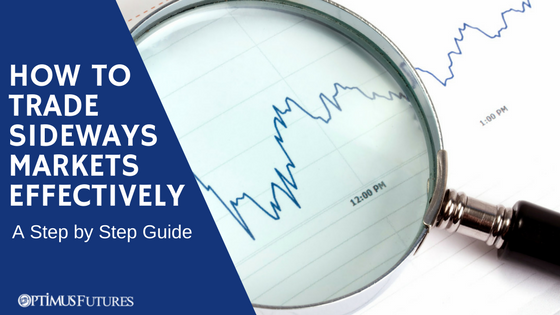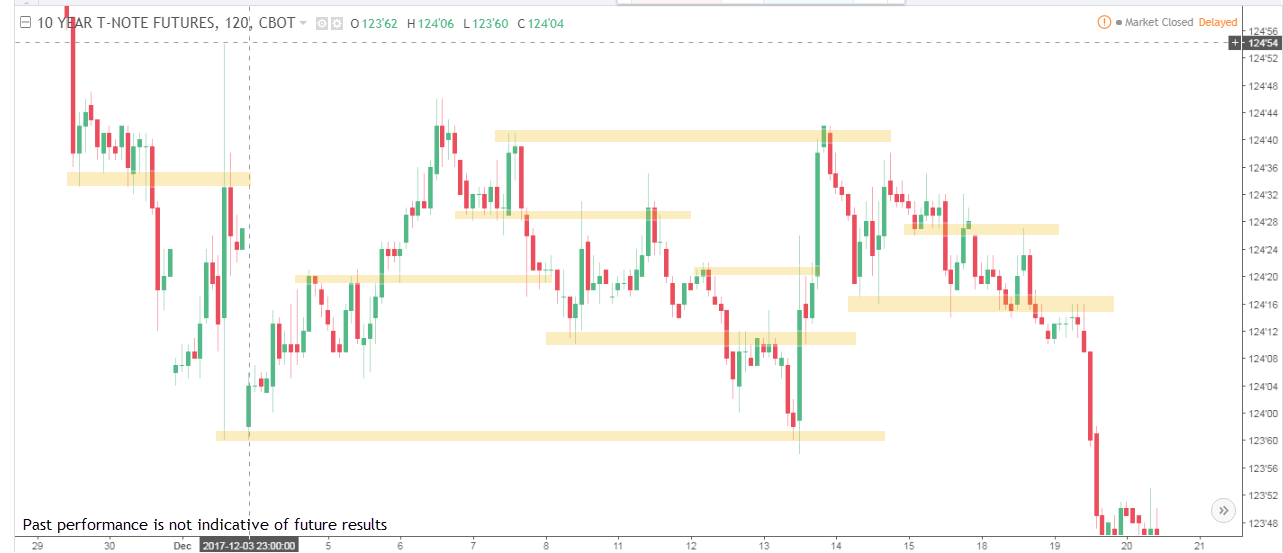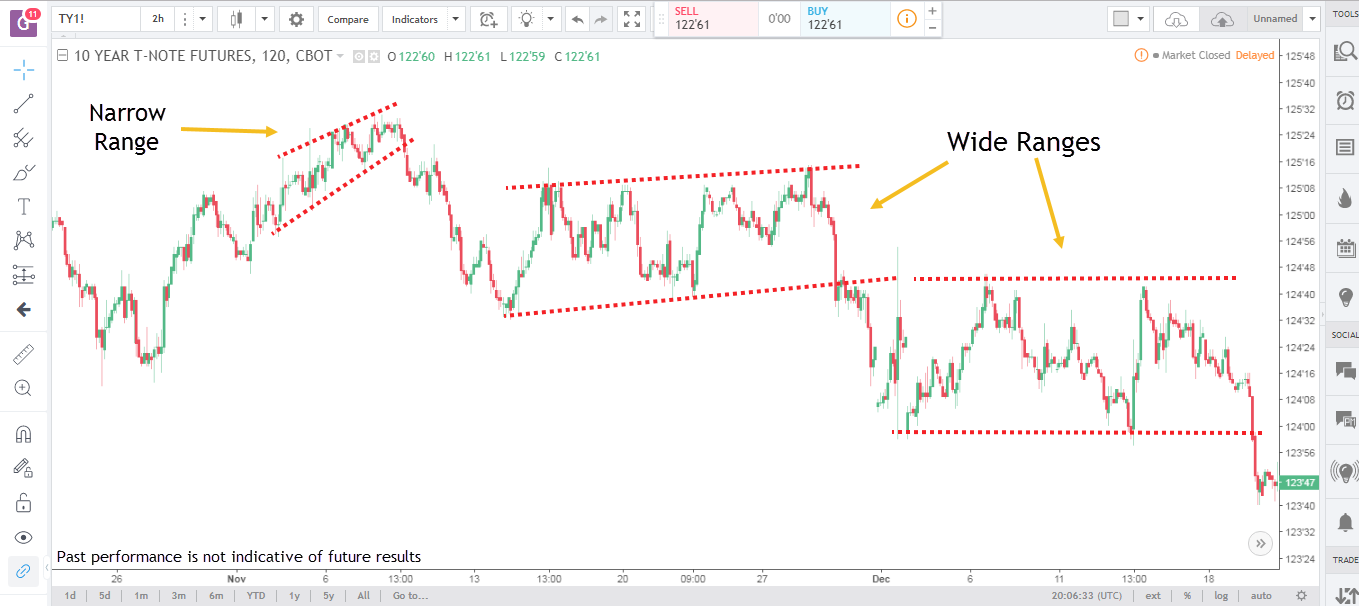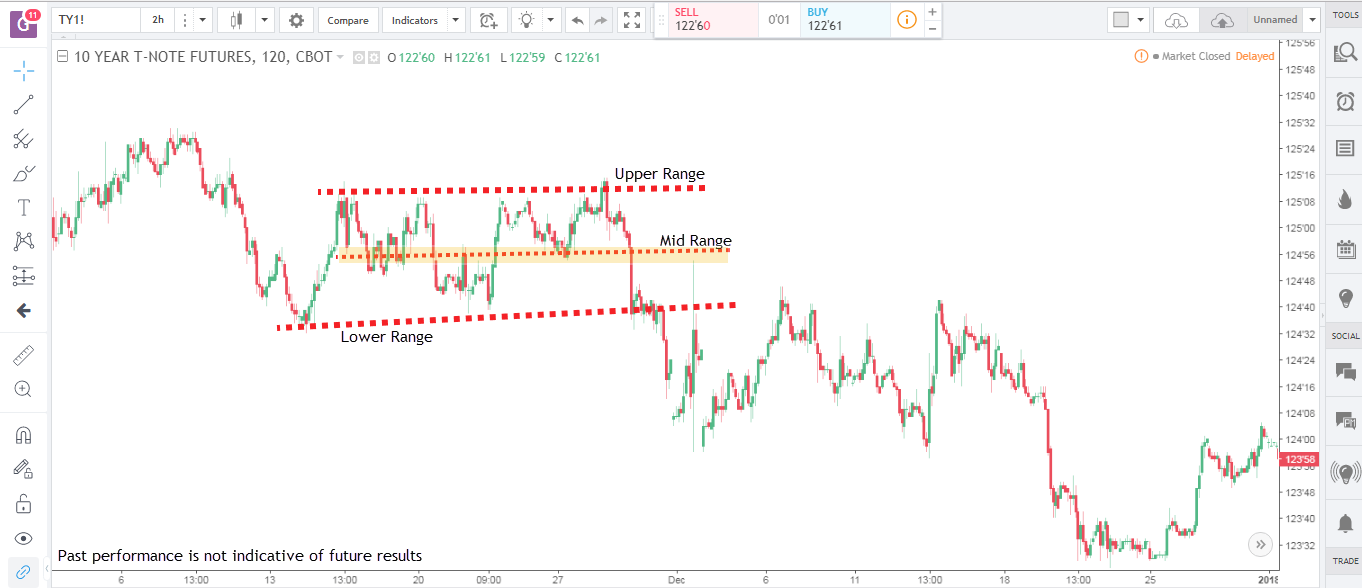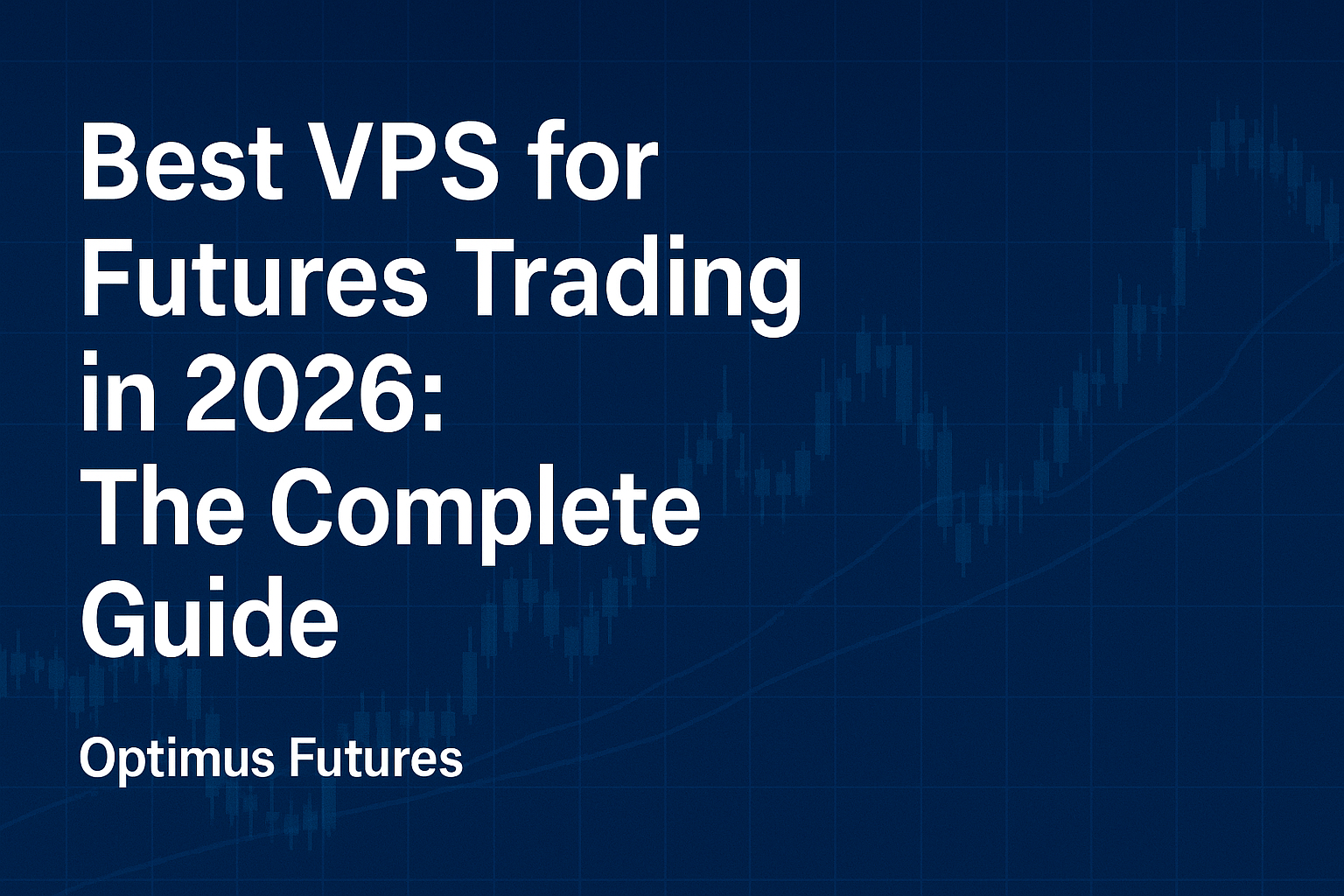The following trading article on How to Trade Sideways Markets is the opinion of Optimus Futures.
One of the most difficult yet inevitable market conditions for traders is the notorious sideways market, which can dent trading performance if traders fail to adjust accordingly.
In this article, we lay out a step by step process to help you tackle a sideways market for potentially better trading results.
Learn to Identify a Sideways Market
The first step might seem intuitive and obvious but is often a point ignored by traders. A sideways market is obviously one where price action will not roll in one definitive direction, (up or down) but run side to side on your screen through short bursts of movements up AND down reflecting major indecision in the market.
A consolidation or sideways phase in the market may be easy to spot – even for newer traders – when it has already formed, but can be a real challenge to spot as it is forming when the market is transitioning from a trending phase to a consolidation phase. It will usually take traders quite a few losses before they eventually realize the market has lost the trend and decisive direction unless they pay attention to the actual element of sideways markets – periods of short brisk price movements.
Contrary to a trending market, a sideways market will often comprise of brief periods of strong price action in one direction that will often reverse shortly after, usually off even short term support and resistance levels formed as recently as a few periods ago.
As illustrated in the chart above, a plethora of short term levels in a tight range is often what makes trading sideways market so daunting. They also form a key characteristic of consolidation phases themselves and can be early indicators of a market that could possibly be transitioning into a sideways phase. On the contrary, a strong trending market will usually pack enough strength to push through minor areas with relative ease.
Define the Range
Once you have identified that your market is in (or is entering) a consolidation phase, one of the first steps to take is to clearly demarcate the limits or the range of the consolidation phase itself. Usually, these phases will have a clearly defined upper and lower range marked by either side to side support and resistance levels or angular trend lines and channels.
Identifying the range is close to marking out your battle field – that is, getting to know how much of a playing field do you actually possess. Sometimes a consolidation phase will be too tight to make it not worth trading at all. Other times, the range can be wide enough to allow you trade with caution.
The wider the range the more ‘space’ you technically have to take and manage your trade in. In a very tight range, as the one illustrated in the chart above, trading could be more risky as trouble areas and potential support and resistance levels could be grouped very close together, making it hard to expect much from price movements.
Defining the range gives you a more clear perspective of the broader picture. Knowing the upper and lower limits of the trading range also allows you to watch the range itself for an eventual breakout to either side. This is especially useful when the top and bottom levels of the consolidation phase are defined by angular trend lines, like in a wedge pattern that is slowly constricting and tightening price action, leading to an eventual inevitable breakout.
Identify the Midrange and all Other Internal Levels of Support/Resistance
The next step is to highlight all the areas within the trading range that could potentially cause price to hold as support or resistance. They key here is to identify all levels. Often, traders will be glued to the larger more obvious regions, which in the case of consolidating markets is often just the top and lower end of the consolidation range itself.
The trick is to identify ALL levels of potential support and resistance. In a weak market that is struggling for sustained momentum, even the minor areas of support and resistance can cause the price to hold up. Hence all possible troubles areas – major and minor – need to be ingrained into your trade management and planning phase. While doing so does not entirely eliminate the notorious ‘surprise’ factor of a sideways market, it does eliminate a lot of uncertainty and ambiguity around the seemingly unpredictable price action.
Of prime importance in sideways markets is often the midrange of the area that price is consolidating in as it tends to act as a pivot for the price as it moves back and forth from the consolidation range.
Prepare for Spikes
Even though you may have outlined all the possible regions on the chart that could potentially cause trouble for the price as it hits these regions, you need to factor in the uncertainty that comes along with trading in a weak non-decisive market.
Just as the price can bounce and spike up and down the short and long-term levels within the consolidation range, it may still be prone to spikes or otherwise strong and sudden periods of sharp movements in either direction off a seemingly clear level within the range.
This likelihood calls for a safe and conservative trading style, even for trading methodologies that may otherwise warrant some aggression during normal trending market conditions. Whether that involves placing hard stops on the chart rather than ‘mental’ stops, using trailing stops, watching the trade live (often referred to as ‘babysitting’ the trade) or taking quick profits at brief intervals, take all actions necessary to safeguard yourself from reversing market action.
One of the primary reasons why many traders struggle to trade effectively in sideways markets is their inability to call for quick exits which they can erroneously consider to be premature. This is rather true for trend traders who are normally used to riding big runners via getting in on a strong smooth trend often.
The chart above shows one example of a seemingly unpredictable bounce during sideways market action. Notice how price pulls back off the region marked in the yellow circle, even though it would be hard to categorize the area as a clear support and resistance level. We are well under the top end of the range and also further away from the midrange support and resistance level. It is these kinds of pullbacks that require conservative trade management when the market is choppy and indecisive.
Find the Needed Balance between Aggression and Conservation
While it is very important to not be over aggressive when trading a sideways market, it is also just as important to not be ultra conservative either.
In fact, when in a strong trending market, it may be at times meritorious to retain a tight trade management strategy leading to, for example, tight trailing stops simply because you expect to ride a strong period of price movement.
In a sideways market on the other hand, because market sentiment is weak, managing the trade too tight can often result in a ‘suffocated’ trade as price whipsaws within the trading range bouncing off minor and major support and resistance levels found internally within the range.
For example, moving the stop to breakeven as soon as a trade moves in a sideways market holds a very strong chance of hitting, eventually yielding a no-loss-no-gain result for the trade, when in effect it was worth a lot more. The strategy could well have been intended to safeguard against choppy price action, but ultra-conservative trade management does not help book consistent results in a sideways market either.
In the example mentioned above, while the trader may have actually booked a breakeven result for the trade, he or she in real terms made a loss. This is because every time you take a position in the market that yields a breakeven result you expose part of your capital at risk for which you did not make a reward.
It is easy to see how several trades executed in a sideways market – each fetching either a breakeven result or a minor loss or gain – amid ultra conservative trade management, would not be benefiting your account equity much at all. In fact, for such a trader, avoiding trading in a sideways market altogether might actually be a smarter move as that eliminates the risk entirely.
For other traders who wish to hone their sideways market trading skills, it is crucial to find the perfect balance between aggression and conservation when it comes to trade management. Unfortunately, it may not be a straightforward solution and vary largely depends on the market, the strategy and the individual preferences of the trader.
However, the foundations for a well-balanced sideways market trade management strategy still remains the same and will rely on the steps outlined above. That is, knowing the consolidation range limits, all the potential trouble areas within the range, and accommodating for the likelihood of a surprise bounce amidst the weak market sentiment.
There is a substantial risk of loss in futures trading. Past performance is not indicative of future results.

